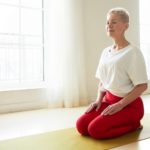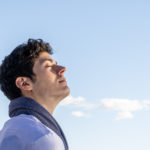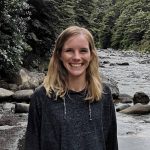
Rachael Cooper
Certified yoga instructor (Vinyasa and Hatha Yoga), CYT 200 teacher training certificate
Following on from our previous article, Relieve back pain: 5 Beginner Yoga Exercises, where we started with easier stretches and poses, today we move onto exercises that demand a bit more attention and composure.
Focus is on activating the right muscles to improve balance, which will allow our body to move more freely.
Entire Boat – Paripurna Navasana
Paripurna = entire, nava = boat
This asana resembles the shape of the letter V. Both the abdominal and back muscles are activated to keep the body balanced and lifted.
Same as the back muscles, the abdominal muscles play an integral part in supporting the weight that the spine bears. The muscles all need to work together to support the weight.
If some muscles are taking on more load than others, we start to strain the muscles and the spine will then have to support the weight on its own.
How to do entire boat pose
Keeping the sternum lifted is important in this pose so that we don’t compress in the lumbar area.[1]
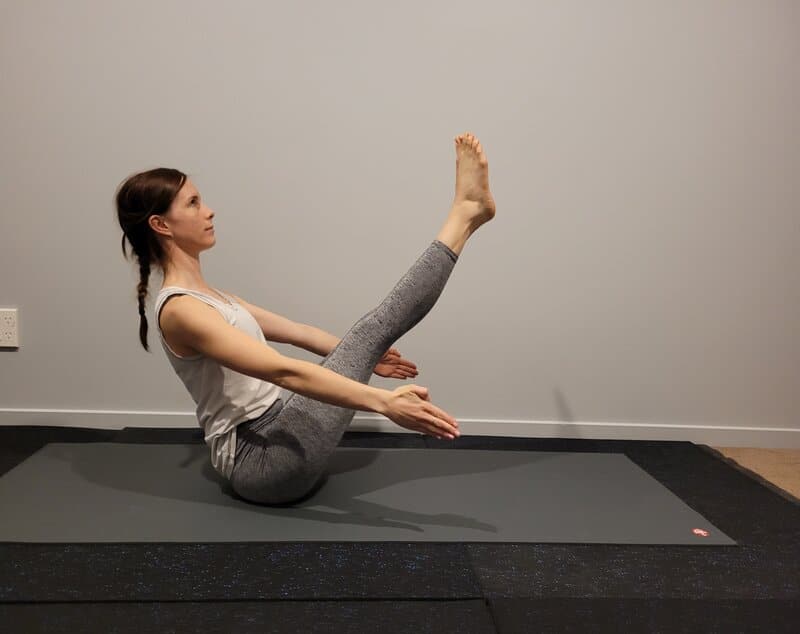
Sit on the floor with your legs straight out in front of you. Keep the back straight and slightly recline while lifting your legs off the floor. Raise the hands off the floor and stretch the arms out forwards.[2]
Locust – Salabhasana
Salabha = locust
Salabhasana counteracts poor posture as your shoulders are pulled back, allowing the chest to open and creating extension in the thoracic spine.
RELATED — Bad posture can impact your health: Getting it straight
As we activate the muscles in the back and the buttocks, we begin to stimulate the parasympathetic nerves in the lower spine. Activating the parasympathetic nerves allows our body to relax and calm areas in pain.[3]
Regular practice of this balancing backbend can benefit people who suffer pain from slipped discs.[2]
How to do locust pose

Lie on the floor, facing downwards. Extend the arms back and raise the chest and legs off the floor while trying to lift the crown of your head forwards and upwards. Bring the shoulder blades together and gaze forwards.[4]
Reclined Big Toe – Supta Padangusthasana
Supta = reclined, padangustha = big toe
The hips and the back are connected through the sacroiliac (SI) joint. This joint is a part of the hip and is connected to the sacrum.
Disabilities in the SI joint can cause lower back pain
Also, when the SI joint lacks in range of motion, the curvature of the lumbar can be affected.
This supine stretch reduces tension on the SI joint and brings our spine into its neutral position.[5]
How to do reclined big toe pose
Lie down with your back on the floor. Lift one leg off the ground and with the same side arm, reach up towards your foot and hold on to your big toe with your fingers.

Try to relax the head, releasing any tension around the neck.[6]
Gate – Parighasana
Parigha = beam of a gate
This asana brings our spine into lateral flexion, relieving tension from a stiff back and compression of the spinal discs.
The unnatural position of the stretch improves the range of motion in the spine and lengthens the muscles of the spine and the abdomen. It also benefits the hip flexors which work to keep the spine in correct alignment.[7]
How to do gate pose
Start by kneeling on the floor, then stretch one leg out sideways, keeping it inline with the body.

Extend the arms out, then place the corresponding hand of the extended leg on to the shin. The other arm goes up and over, coming into a side bend.[2]
Extended Triangle – Utthita Trikonasana
Utthita = extended, tri = three, kona = angle
This pose activates the muscles around the upper torso, obliques and the deep muscles closest to your spine.
Utthita Trikonasana eases the tension in the lower back muscles
The SI joint is also targeted and the muscles surrounding are also activated to promote ease in mobility.[2]
How to do extended triangle
Spread the legs apart and point the front foot forward and the back foot slightly inwards.
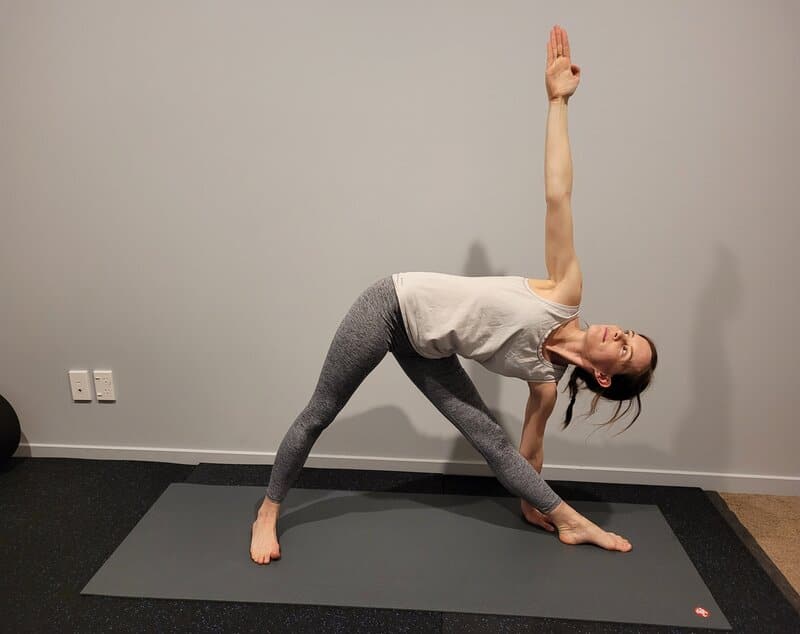
Raise the arms out and to the side, and bring the front hand down towards the ground, on the outer edge of the front foot. The back hand, meanwhile, raises up inline with the shoulder. The chest should rotate by turning the torso out to the side.[2]
Summary
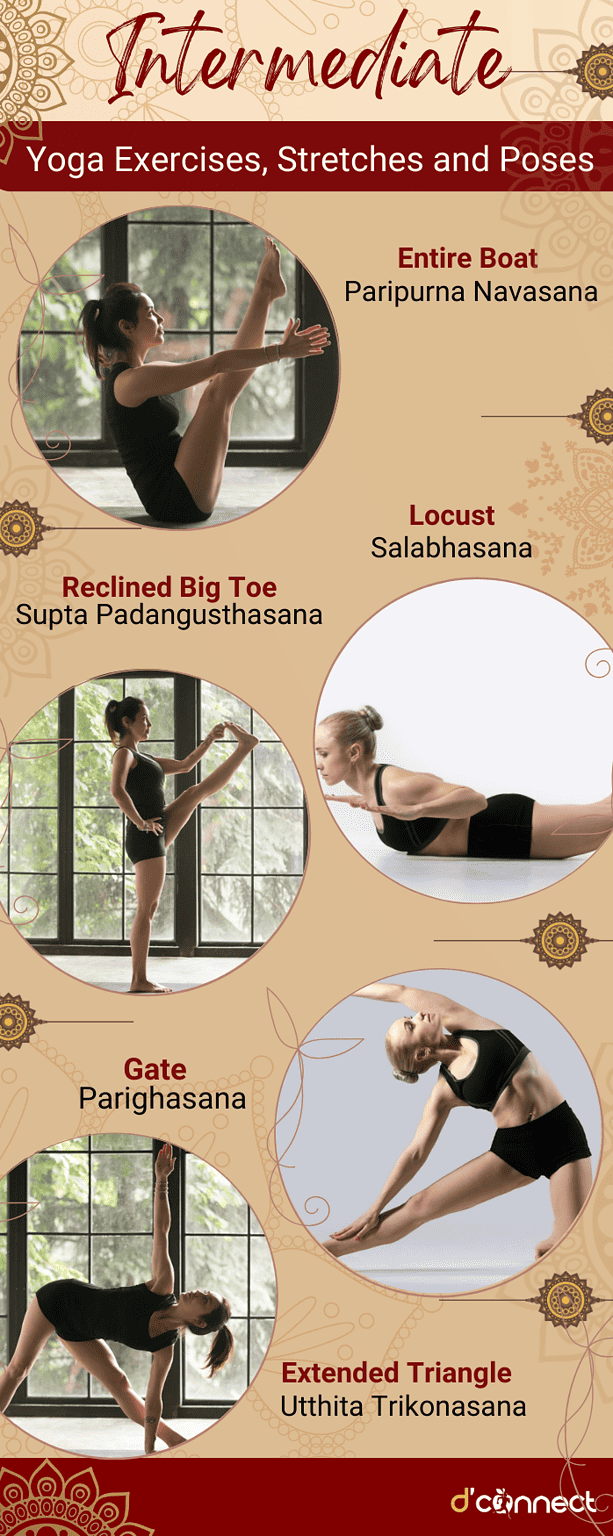
Note – Feel free to share or print out this image as a guide as you first start.
Related Questions
1. Where does Yoga come from?
The exploration into yoga’s history takes us back to around 3000 BC.
Most teachings were passed down orally, but researchers have found that it is likely to have started in the Indus Valley in India, which is now Pakistan.[8]
RELATED — The Origins of Yoga: History, Development and Modern Times
2. Which asana has a positive effect on the respiratory system?
Chest opening asanas can considerably improve the function of the respiratory system.
These asanas stretch the supporting muscles, in particular the diaphragm, and stimulate the lungs.[3] This increases the capacity of the lungs allowing breath to flow freely. Ustrasana (camel pose) is a back bend asana which allows the chest to fully expand.[2]
RELATED — Natural remedies: For our respiratory health
3. Can you practice yoga while pregnant?
Practicing yoga through all stages of pregnancy is both safe and beneficial for the mother and the child.
If the expectant mother has not done yoga before and/or has a high risk pregnancy, it is recommended to see a yoga teacher that specializes in pregnancy yoga as there are some poses that should not be practiced.
Vigorous yoga or learning to attempt complex yoga asanas is not recommended to be practiced during pregnancy.[9]
If you don’t know how to start, or if you are struggling with a particular pose, or have a question for Rachael, feel free to let us know in the comment section.
Rachael first started practicing Hatha Yoga in 2014, and since 2017 has been focused on the Iyengar method, where she learned the importance of alignment and precision in asana, and creating yoga as a discipline.
Rachael is passionate about bringing the meaning of yoga and its practice into the community to create freedom from dis-ease in the body and mind. This is why she is continuously improving and evolving as a teacher and is currently in the process of completing CYT 300 teacher training certificate.
If you would like to know more about Racheal, please visit The Yoga Project. Rachael also holds free yoga classes at the local park as well as private indoor venue sessions.
References
(1) Keys, G. K. (2019, September 17). Building Core Strength to Reduce Back Pain. Spineuniverse. Retrieved from https://www.spineuniverse.com/wellness/exercise/building-core-strength-reduce-back-pain
(2) Iyengar, B. K. S. (2006, March 20). Light on Yoga: The Classic Guide to Yoga by the World’s Foremost Author (2/18/06 ed.). Harper Collins Publishers.
(3) Swanson, A. (2019, January 8). Science of Yoga: Understand the Anatomy and Physiology to Perfect Your Practice (DK Science of) (Annotated). DK.Tummee.com. Retrieved from https://www.tummee.com/yoga-poses/locust-pose
(4) Locust Pose Yoga (Salabhasana) | Yoga Sequences, Benefits, Variations, and Sanskrit Pronunciation. (2018, May 11).
(5) Danisa, O., MD. (n.d.). Stretches for Sacroiliac Joint Pain Relief. Spine-health. Retrieved from https://www.spine-health.com/wellness/exercise/stretches-sacroiliac-joint-pain-relief
(6) [Roads To Bliss]. (2020, July 11). Everything About Adho Mukha Virasana with David Meloni (Iyengar Yoga) [Video]. YouTube.
(7) Gate Pose Yoga (Parighasana) | Yoga Sequences, Benefits, Variations, and Sanskrit Pronunciation. (2017, December 29). Tummee.com.
(8) The Yoga Sutras of Patanjali (A. S. Shearer, Trans.). (2002). Bell Tower.
(9) Stephens, M. (2012). Yoga Sequencing: Designing Transformative Yoga Classes (Illustrated). North Atlantic Books.


